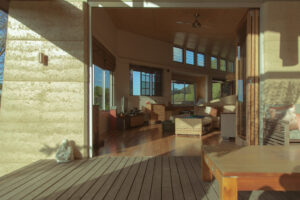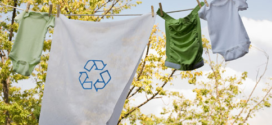
Sustainable Home Design
Homeowners around the world are becoming more aware of the effect their homes and lifestyles have on the environment and they’re shifting towards more sustainable and eco-friendly design in order to reduce their carbon footprint.
With all the technological advancements and eco-friendly materials of today, going green and sustainable is not as difficult or expensive as it used to be. Even though some sustainable design solutions still cost more upfront, they do pay off in the long run. An investment into the durable, eco-friendly design will save you a ton of money down the line so here are several suggestions regarding what steps to take in that direction.
Passive solar design
Solar energy is the ultimate sustainable energy source in our world and one of the ways of utilizing it is through passive solar design. It basically means using our sun’s energy to heat and cool our homes naturally without relying on mechanical systems. The positioning of your doors and windows are crucial for the absorption of the sun heat in winter and keeping the house cool in summer.
When you design your home according to the passive solar design principles, you reduce the need for electrical heating and cooling. This concept is nothing new as it has been used for thousands of years before electricity was even discovered so going passive solar is really going back to natural principles.
Renewable energy sources
Despite being fairly expensive initially, renewable energy home systems are gaining in popularity and the choices are growing constantly. Depending on your budget, you may opt for solar panels and wind turbines. The former is the most common renewable energy sources available and can be easily installed in various spots, such as your roof or yard. The latter is maybe a little less conventional choice in an urban setting due to its robust appearance and noise they create but are an equally efficient sustainable energy source.
Repurposed and eco-friendly materials
No home can be called sustainable without the use of reclaimed and eco-friendly materials. In most cases, it’s best to use reclaimed materials when you’re looking for sustainable design solutions, but you also need to know if the material is durable, if it was harvested sustainably, if it contains any toxic ingredients and if it will be possible to recycle it in future. As the Bachelor of Arts degree in interior design at Raffles Milano teaches its students, to design is to transform the world, from the simplest things right up to the most complex ones,
If you have to opt for new materials, find local sources whenever possible. Thankfully, at this time and age, there’s a wide range of sustainably sourced eco-friendly building and design materials so it’s easy to find what you need. For instance, floors are an important element of every home design and the materials you can use now range from cork, reclaimed wood planks or bamboo, among many. Also, rugs produced of natural fibres have gained huge popularity, so whether you’re designing an indoor or outdoor space, and whether you’re going for a traditional or modern style, you’ll be able to find a huge range of excellent rugs.
Energy-efficient appliances
One of the easiest and quickest ways towards home sustainability is opting for energy-efficient home appliances and light bulbs. These products list their energy savings information on the package so you can easily make comparisons and choose whatever suits your home and needs best.
Since the fridge consumes most energy of all appliances, it should be your top concern when you go shopping. By investing in a high-quality, energy-efficient refrigerator, you’ll be saving money long term by cutting your energy bill and you’ll be doing a huge favour to the environment.
Proper insulation
One of the crucial ways of conserving energy in your home is having proper insulation. This will ensure you keep the optimal indoor temperature inside regardless of the outdoor weather. Without proper insulation, meaning sub-par material was used or there are cracks and gaps around your doors and windows, air will easily escape and compromise the comfort of your home as well as your heating bill as you’ll have to spend more energy to keep your home warm in winter and cool in summer.
The most vulnerable parts of your home are the attic and the basement, so ensure you have them covered. The insulation costs vary from one home to another, and despite higher initial costs, benefits are multiple: you will cut your cooling bill in summer and heating bill in winter and the time you spend in your home will be much more comfortable and pleasant.
By following these simple and practical steps, you can easily turn your home into a warm and comfortable place, reduce your energy consumption and protect the environment. By making a few different choices and opting for eco-friendly appliances, high-quality insulation, renewable energy sources and reclaimed materials, you’ll be a step closer to creating a sustainable home.
Article written for WhosGreenOnline.com by Lillian Connors; @lillian_connors
 WhosGreenOnline.com Your Online Magazine and Directory for Green Business, Product, Service and News!
WhosGreenOnline.com Your Online Magazine and Directory for Green Business, Product, Service and News!





